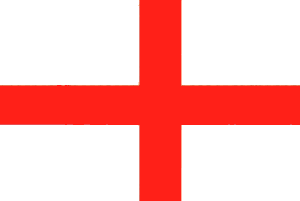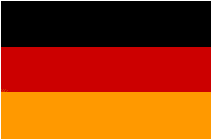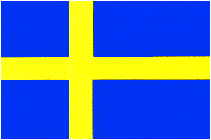Who were the Normans and why are they so important in England's history:



(download as pdf)
In the early medieval times, the land that we today call France was inhabited by different former barbaric tribes.
Although there were strong handed rulers, who centralised the land several times, like Clovis (Chlodwig), Charles "Martel" or
even Charles the Great (Charlemagne), there was no possibility to take over completely the warrior life- liking soldiers of some provinces
especially at the border.
Regular wars and intrigue made the king's position difficult. That is why it was possible for some groups to lead separate wars
in their own name, own responsibility and at their own costs.
Such was the situation when the Normans, living in today's Normandy in the north of France, lead by William the Conqueror
(in French: Guillaume le Conquerant) attacked England and won the battle on the Hastings field in 1066.
How much they, the Normans, regarded themselves French and on what level they believed to be Norman is an other
question, as well as discussing the reasons (real and fictitious).
Here the effects of the Normans on England's history will be detailed.
*
Under the Plantagenet dynasty, England was often regarded by the conquerors as a French province
and they handled the land and its inhabitants accordingly. For hundreds of years, no English crowned head could
speak English, for the official language was French and Latin. The bigger trouble was, however, that most of the knights
and noble men after 1066 could not express themselves in English which was much more problematic. The English
inhabitants got to know very fast the hastiness of the Norman cavalry and how fearful
and aggressive they were. So bloody was the battle by Hastings that most English nobles died
the others were disregarded or chased away.
So what could have happened in such a situation? The royal and noble courts used their language. Their servants,
English peasants and little nobles, had to learn French, at least some expressions.
Over the years they got used to each other's language. Have you ever wondered
why there are separate names for
the meat on the table and the flesh on the field? The English peasants called their cattle cow, the French
nobles ordered beef (today it is boeuf).
Let us see a table comparing these words:
|
English word for the animal |
English word for the meal |
French word (modern) |
| cattle, cow |
beef |
boeuf |
| sheep |
mutton |
mouton |
... and the row could be continued. Now it is not hard to imagine, how the French influenced the English
language and how such world like prison, tower, court, justice, etc. came into the English.
Sometimes the French brought in new words. Sometimes these words abolished the old English words. Sometimes they became synonyms
with different stylistic shades and this is the most interesting part of the Norman effect.
Let us examine the following pairs and their stylistic value:
look for - search - seek
ask - question - interrogate - demand
answer - respond - reply
etc.
Also, some names became fashionable. Robert and William are such English names that the Norman "intruders" made
fashionable.
In brief, this is the importance of the Norman conquest and occupation in England's history. It made the language
wider, more colourful and one step closer to the condition that it can become today's "common language".
Top
Viking Blood:



(download as pdf)
There are different theories on where the Germanic tribes came from and whether
there was a common Germanic language. It is quite sure, however, that the
settlements of the ancient Germanic tribes were somewhere in the area of today's
South Germany. From there, the ancestors of the English, Danes, Swedes, Saxons,
etc. wandered to every direction of the compass rose.
Those tribes, who wandered northwards, settled down in the southern side of
Scandinavia, where the withdrawal of the ice was in progress since 10,000 years
ago. (Later this process even influenced the Scandinavian policy and economy.)
The Germanic inhabitants of Scandinavia spoke the same language for over
thousands of years. There were only slight differences in the dialects. Those,
who speak Swedish, Norwegian, Danish or Icelandic, not even mentioning the world
famous and internationally accepted and spoken language of the Faeroe Islands,
are in the pleasant and lucky position of understanding the other above listed
languages as well. At least on some level, for the pronunciation became
different.
The Scandinavian tribes lived happily with each other for over thousand of
years, when in the 8th century, their technical (with special focus on warfare
and sailing) development became so high that they thought for themselves: "Hey,
why not attack some civilisations across the world? That'd be fun" And these
thoughts were put into practice very soon.
These tribes, of whose warriors plundered the early medieval cities of Europe;
who sailed to America 500 years before Columbus; who established the first
organised states in the former barbaric areas of today's Russia and who inspired
the movie "The 13th Warrior" with Antonio Banderas, were called the Normans.
Their branches were called Vikings, Varangians and Goths.
Let us examine their methods, the reason for their success and their downfall as
well.
*
Allegedly, or rather to say, as the present stance of our
knowledge is, regarding language history, the Germanic tribes in Scandinavia
spoke the same language. When their migration and conquests began, they tore
apart from each other. Some tribes never came back to their father's land but
stayed in the picturesque and fast-varying weathered Iceland. Some went even
further to Greenland, by which they already achieved America. Archaeologists
found Viking objects in today's New York State's area as well, from which they
conclude, that these Vikings handled with the Indians. A very rough story from
these days, which also reflects the importance of intercultural communication,
is as follows:
As these Viking handlers sailed by along the American coast,
they were only a few. They did not intend to occupy the area but just exchange
their commercial goods with the locals. At some point they sold milk to the
Indians. It was on a regular day, everyone went to sleep at night but as the
Vikings woke up the next day, Indian warriors surrounded their camp. Their, the
Indians', attack was lethal and they butchered the few Norsemen with whom they
spent their last supper the day before.
What the reason was? Indians were hunters, bred no cattle, so their stomachs
could not bear animal's milk. They thought the newcomers wanted to poison them.
Stories of the Viking migration lacked not such rough and even rougher elements.
Those tribes which pillaged Europe were not less fearful
warriors. Their new style of warfare surprised the shielded European armies and
firstly, they could not protect themselves properly. It was not only the
Northern coastlines of Europe, which suffered Viking victories. Scandinavian
warriors arrived to the Italian peninsula as well, where they later, in the
Southern parts, established their own state. Warriors of this South Italian
Norman state took part also in the fights between the pope and the emperor in
the mid- medieval times.
Why could they be so victorious at first?
After the collapse of the Western Roman Empire, it was very difficult to form
stabile, centralised states. The Franks were the first, who managed it. After
the death of Charles the Great, as expected, his empire collapsed as well.
Actually, it did not collapse first, but fell apart into three parts. The
Western part became today's France, the Eastern part can be regarded as the very
early predecessor of today's Germany, or the medieval times' fragmented Holy
German-Roman Empire. The middle part was the short lifed Burgundy.
In the early-mid 8th century was the late period of the great migrations that
began in the 4th century. The late arrivals were the Hungarians, cherished by
some Turkish and other Eastern tribes. It was the regular custom of the pagan
tribes that it took time until they got used to the new lifestyle and their
neighbours. Until that they pillaged them and "kidnapped" their women to make
them their own.
So happened, that Europe was attacked from many sides. In the South there were
regular battles with the Arabs. From East, the late-comers "bullied" the West
and from the North, the Europeans could expect Viking attacks.
Also, the European-style warfare was a ruled one, based on regular movement of
the armoured knights. Until they got to know the Viking style, they could not
protect themselves against the Nordic pagans.
The Vikings established several settlements. They invaded also the English
Isles, where they formed the
Danelaw.
It is still very difficult to examine, who has got Viking blood in the occupied
areas, as the blood of the Germanics are very similar. But in the English area,
we can examine the language, the dialects and the names.
Almost all cities in England ending with '-by', concentrates in the area of the
former Danelaw. 'By' in Danish means 'city'.
Also, some people has got names with -son, or- sen at the end. That was a
Dane-Viking custom to name the child after the father. So got a baby whose
father was Erik, the family name (Christian name? not yet. ) Eriksson. ('s' is
the possessive, so Eriksson means: 'the son of Erik').
Let us skip now the cultural effect the Vikings brought into England with
special reference to the language (so called
loanwords),
because it is worth another essay with similar length.
There was an other branch of the Scandinavian tribes called
Varangians (ancestors of Swedes), which sailed eastwards, along the rivers of
the lands of the Slavs. They reached the Caspian Sea and travelled even further.
The importance of these Norsemen was, that they established the first
East-Slavonian state, the Kievan Rus. Their culture and effect on the local
pagans is introduced quite authentically in the first few minutes of the above
mentioned "13th Warrior".
In wikipedia.org you can find:
more information about the Varangians
more information about the Vikings
Top
Flags: stripes and crosses



(download as pdf)
There are things that we take for granted in our life, not
bothering what their origins or real meanings are. Such are the flags of our
nations. We salute them, we respect them but nobody, at least very few of us
wonder ever, that maybe a hundred years ago, our grandfathers, or the fathers
of our grandfathers, (or the fathers of our grandfathers' fathers or their
fathers; if we want to
quote some Monty Python here) may have respected other flags. This is especially
true for Germany or the Eastern European "newly formed" states.
Has the highly regarded reader audience ever wondered about the origins of their
national flags? Have you ever realised that different cultural circles use
similar symbols for their flags and these differ from area to area.
Northern European and European countries use, with few exceptions, two different
approaches with their flags.
One is the striped, tricolour- kind of flag. The tricolour origins from the
French revolution, where the three colours symbolised brotherhood, freedom, and
equality.
Tricolours became popular in the time of the birth of the nations in the 19th
century. Some countries, however, rotated the vertical position to horizontal
position.
It was not necessary, nevertheless, that the country is a republic to have a tricolour- type
of flag. Just think of the black-white-red flag of the Bismarck- Germany. Or
today's Netherlands.
Among the countries being dealt with on this website, the followings have
striped flags:
(by clicking at them you can read about their origins in wikipedia)
The other approach, used in Northern
Europe is the crossed flag. The cross can symbolise many different things. For
example Sweden's cross is based on the Danish flag, the choice of colours is
based on their medieval coat of arms. The Scandinavian countries were, over
hundreds of years, more or less voluntarily, bound to each other in the Calmar
Union. That's the reason of the great effect they had on each other. Except for
Finland, all Scandinavian countries are parliamentary monarchies, so talking
about tricolour-type of flags is not relevant.
Finland has so strong cultural and historical bounds to Sweden, that
explains everything about their white flag with the blue cross in it.
Here is a list of the flags of the Scandinavian states:
(move your cursor on the flag and the nation's name appears)
In case of the British Isles, the crosses in the flags represent Catholic saints
(not that there would be other saints), so these crosses are in connection with
religion.
Let us see, what the flag of Great Britain
is composed of:
|

|

|
 |
|
St. George's cross that represents England, |
St. Andrew's cross, that represents
Scotland |
and St. Patrick's cross that represents
Ireland (today, only Northern Ireland). |
If we put together these flags, we got the famous flag of
Great Britain and Northern Ireland, the so called
Union Jack:

St. George's cross, on some level represents Wales as well,
otherwise the Welsh would be quite upset, that they left out their dragon from
the Union Jack, although it would have been quite difficult to include it. About
the reasons you can read in the Union Jack link above.
The Welsh flag with the red dragon in it:

Top
The origin of the names of the days in the Germanic languages:



(download as pdf)
It is always very interesting to examine certain words and the origins of them to get more knowledge about a nation's
culture or history. Now, in the case of the names of the days, this examination leads us to ancient Germanic
beliefs.
But before getting into it too deep, let us see a list about these names:
|
English |
German |
Dutch |
Swedish |
Norwegian |
Danish |
Icelandic |
|
Monday |
Montag |
maandag |
måndag |
mandag |
mandag |
mánudagur |
|
Tuesday |
Dienstag |
dinsdag |
tisdag |
tirsdag |
tirsdag |
þriðjudagur |
|
Wednesday |
Mittwoch |
woensdag |
onsdag |
onsdag |
onsdag |
miðvikudagur |
|
Thursday |
Donnerstag |
donderdag |
torsdag |
torsdag |
torsdag |
fimmtudagur |
|
Friday |
Freitag |
vrijdag |
fredag |
fredag |
fredag |
föstudagur |
|
Saturday |
Samstag* |
zaterdag |
lördag |
lørdag |
lørdag |
laugardagur |
|
Sunday |
Sonntag |
zondag |
söndag |
søndag |
søndag |
sunnudagur |
(I apologise the Faroese people for leaving
them out but there were no dictionaries in their language/dialect on the net.
Any expert may write me a mail
about it. Also Faroese letters are welcome - Not in Faroese, of course :-). )
Also, one can examine many different progresses, which the cultures went
through. For example, one can recognise the ancient stance of the Icelandic
language, being the only Germanic tongue, which other language did not or just
hardly influence but you can also see, how, on some level, Rome influenced the
West Germans.
Most names origin from the names of ancient Germanic Gods.
The suffixes -day, -tag,- dag, -dagur are all the present words that evolved
from the ancient description of a day: dag or daeg.
|
The first day of the week: |
In all descriptions for the first day of the week, the forms of the word "moon" can be
identified. Monan, as the old Saxons said. The old Germanic tribes
respected the moon a lot, they even had a calendar based on the moon's cycles. |
|
The second day of the week: |
Tiw (Tyr) was the ancient Germanic God of war. His name is
preserved in the name of the second day's name. |
|
The third day of the week: |
Woen, or Woden was a chief Norse God. He was the husband of
Frigga (see Friday). In the Scandinavian area, the name "Odin" was used
for the same God. With two exceptions,
the third day of the week preserves his name. The two exceptions are in German
and Icelandic. In both of this latter languages, the third day's name indicates,
that it is the middle of the week. |
|
The fourth day of the week: |
In every case, Thor, the God of the thunder is represented.
Thunder in German means "Donner". |
|
The fifth day of the week: |
Even if one would think the forth day's name can somehow be
derived from the idea of getting "free" of the stress of the weekdays, the name of the
day origins from the name of the ancient Norse chief goddess, Frige (also: Friya or
Frigga). |
|
The sixth day of the week: |
As it can be seen, there are two different approaches. West
Germanic languages are influenced by Rome and the Latin tongue. Saturn was the
Roman God of time.
The other approach is, however, more interesting. Ancient Germans bathed only on
this day of the week, so that was the day for bath, that is, "löga" (Swe). In some
form, this expression appears in the North Germanic names.
|
|
The last day of the week: |
In every case, the Sun itself is included in this name. The
idea comes from the Greek, who named this day also after the sun, calling it "Hemera
heliou". |
*"Samstag" origins from the Yiddish "Sabbath". "Sonnabend" (roughly: "the day before Sunday") and Saturntag are also used.
The first one in the Northern and Eastern dialects, whereas the latter one in the dialects along the Dutch-German border.
Top
|